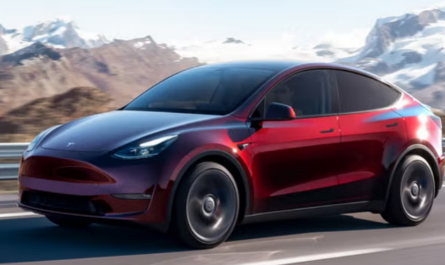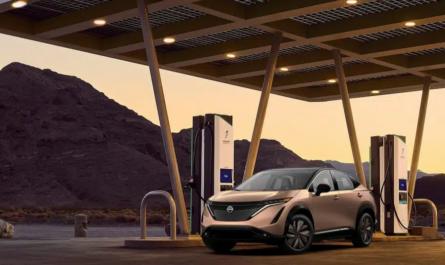At the Annual Meeting of the New Champions, also known as “Summer Davos,” the World Economic Forum (WEF) revealed its much-anticipated list of the Top 10 Emerging Technologies of 2025 on June 24. This annual announcement spotlights technologies that are expected to reshape industries and accelerate global sustainability. Among this year’s top picks, four standout innovations in sustainable and low-carbon energy took center stage—Structural Battery Composites, Osmotic Power Systems, Advanced Nuclear Technologies, and Green Nitrogen Fixation.
These technologies reflect a growing emphasis on creating a cleaner, more resilient global energy ecosystem, aligning with worldwide efforts to combat climate change and achieve net-zero emissions.
Energy Innovation Gains Global Momentum
The 2025 report marks the 13th edition of WEF’s prestigious Emerging Technologies Report. This year, over 250 nominations were submitted by scientists, technologists, and innovators worldwide. A panel of experts carefully evaluated each technology based on five major criteria: social impact, technological maturity, environmental benefits, economic potential, and policy relevance.
From this rigorous process, 10 groundbreaking technologies were selected—each expected to deliver tangible real-world outcomes within three to five years.
Let’s take a closer look at the four energy-related technologies shaping the next generation of sustainable development.
1. Structural Battery Composites (SBCs)
Structural Battery Composites represent a fusion of materials science and energy storage innovation. Unlike conventional batteries that are added to vehicles or aircraft as separate components, SBCs integrate energy storage directly into the structural materials—for example, the body of a car, drone, or airplane wing.
This dual-purpose design significantly reduces overall weight, enhances fuel efficiency, and lowers carbon emissions. Beyond transportation, SBCs could revolutionize industries like aerospace, robotics, and construction, where reducing material weight without compromising strength can drastically improve performance and energy usage.
Experts believe SBCs could lead to lightweight electric vehicles with extended ranges, helping to accelerate the shift toward carbon-neutral mobility.
2. Osmotic Power Systems (OPS)
Also known as salinity gradient power, Osmotic Power Systems generate electricity from the natural voltage difference between two water bodies with varying salt concentrations—for instance, where rivers meet the sea.
Although the concept dates back to the 1970s, technological limitations stalled its development. Today, advances in membrane technology and nanomaterials are making osmotic power far more efficient and scalable.
OPS is now emerging as a steady, low-carbon renewable energy source, capable of complementing solar and wind power by providing consistent output regardless of weather conditions. If commercialized, osmotic power plants could offer coastal regions a new, sustainable method of energy generation with minimal environmental impact.
3. Advanced Nuclear Technologies (ANT)
The WEF report highlights a renewed global interest in nuclear energy as a clean and stable power source. Advanced Nuclear Technologies—including Small Modular Reactors (SMRs), alternative coolants, and next-generation fusion reactors—are transforming the nuclear industry.
SMRs, in particular, are designed to be smaller, safer, and more cost-effective than traditional reactors. Their modular design allows for faster deployment and easier integration into existing energy grids.
Meanwhile, nuclear fusion, long regarded as the “holy grail” of clean energy, is making remarkable progress. Several private companies and national labs are achieving milestones that could bring commercial fusion energy within the next two decades.
These technologies promise to make nuclear energy a cornerstone of global decarbonization efforts, balancing reliability with sustainability.
4. Green Nitrogen Fixation (GNF)
Nitrogen fixation is essential for producing ammonia, a critical ingredient in fertilizers that sustain global agriculture. Traditional ammonia production, primarily through the Haber-Bosch process, consumes about 2% of the world’s total energy supply and contributes significantly to greenhouse gas emissions.
Green Nitrogen Fixation (GNF) introduces a new approach—using engineered bacteria, enzymes, and renewable electricity (such as solar or wind) to synthesize ammonia under mild conditions.
This bioengineering advancement could drastically cut emissions, reduce dependency on fossil fuels, and make fertilizer production more sustainable and affordable. As the global population grows, GNF could play a critical role in food security and climate resilience.
Beyond Energy: Six More Transformative Technologies
The WEF’s 2025 report isn’t limited to energy innovations. The remaining six emerging technologies span diverse fields—ranging from biotechnology to artificial intelligence—reflecting the interconnected nature of modern innovation.
They include:
-
Engineered Living Therapeutics: Microbes designed to diagnose and treat diseases from within the human body.
-
GLP-1s for Neurodegenerative Disease: Repurposing diabetes drugs for potential treatment of conditions like Alzheimer’s and Parkinson’s.
-
Autonomous Biochemical Sensing: Smart sensors that can continuously monitor health markers or environmental toxins.
-
Nanozymes: Synthetic enzymes that mimic natural ones but are more stable and versatile for industrial or medical use.
-
Collaborative Sensing: Networks of smart sensors working together to enhance accuracy in data collection.
-
Generative Watermarking: AI-based tools that embed detectable digital watermarks in generated content to ensure authenticity and transparency.
Four Themes Defining the Future of Innovation
The 2025 report identifies four overarching themes that are shaping the global technological frontier:
-
Trust and Safety in Connected Systems: As AI and IoT expand, ensuring transparency, privacy, and security will be crucial.
-
Next-Generation Biotechnologies for Health: From precision medicine to synthetic biology, healthcare innovation is becoming increasingly personalized.
-
Redesigning Industrial Sustainability: Emerging technologies are reimagining how industries produce, transport, and recycle materials.
-
Integrating Energy and Materials: The blending of energy systems with advanced materials is driving a new era of efficiency and circular design.
These themes highlight the shift toward interdisciplinary collaboration—where breakthroughs often result from the fusion of multiple scientific domains such as AI, biotech, and material science.
A Sustainable Forum for a Sustainable Future
The three-day Summer Davos forum, themed “Entrepreneurship for a New Era,” brought together global leaders, entrepreneurs, and scientists to discuss the future of technology and sustainable growth.
Topics included the global economic outlook, China’s innovation strategy, industrial transformation, and clean energy development.
Demonstrating its commitment to sustainability, the event operated on 100% renewable electricity, reducing an estimated 600 tons of carbon emissions.
The Road Ahead
The World Economic Forum’s Top 10 Emerging Technologies of 2025 provides a compelling glimpse into a future defined by clean energy, advanced materials, and intelligent systems. From lightweight electric vehicles powered by structural batteries to bioengineered fertilizers that reduce emissions, these technologies embody humanity’s drive toward a smarter, greener, and more equitable world.
As innovation accelerates, the next decade promises to be a transformative era—one where technology doesn’t just power economies but also preserves the planet for generations to come.




